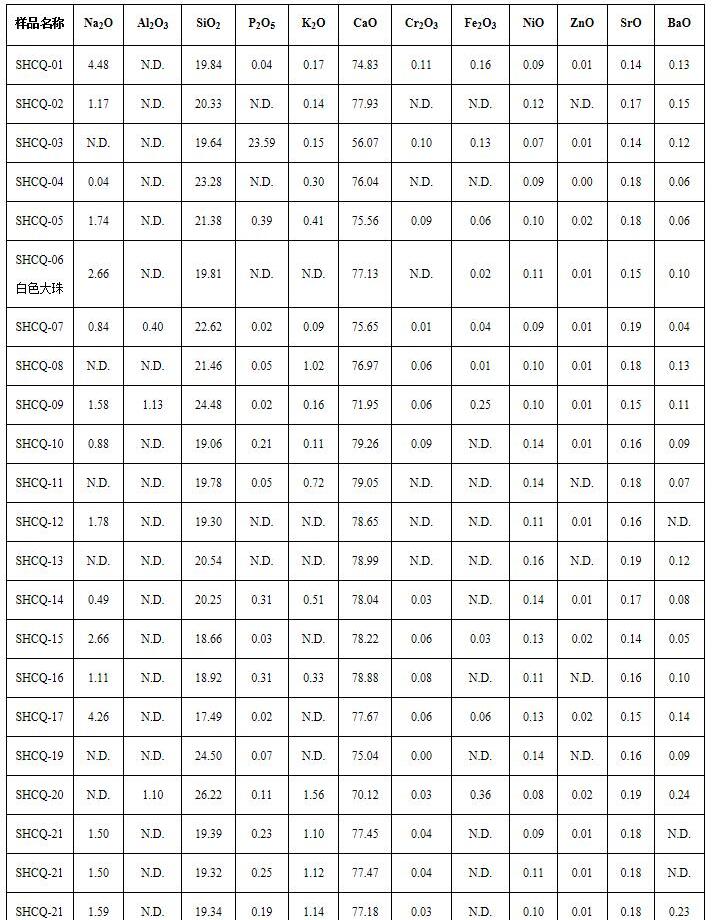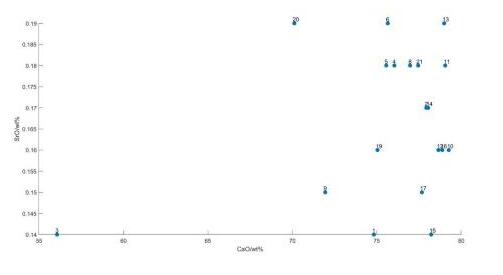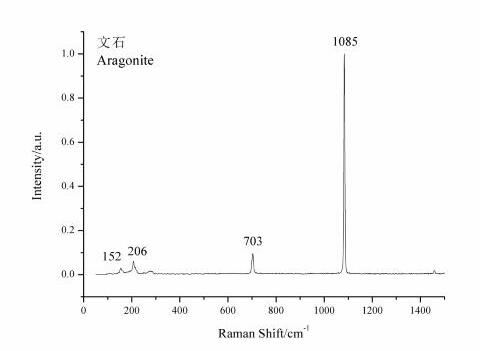
Test and analysis report on the collection of Zhengzhou Shanhaiguo Museum
I. Sample information
This time, 21 samples were selected and sent by Zhengzhou Shanhai Museum. The sample information is shown in Table 1. Table 1 Basic information of the samples of Polygonum lappa L.

Second, the experimental method
1. Energy dispersive X-ray fluorescence spectrometry (XRF)
The model of energy dispersive X-ray fluorescence spectrometer (XRF) is OURSTEX100FA. The equipment uses metal palladium (Pd) as the X-ray source. The maximum excitation voltage of the X-ray tube is 40kV and the maximum power is 50 W. The diameter of the X-ray focal spot irradiated on the sample surface is about 2.5 mm.. The equipment is mainly composed of four units: low vacuum detector unit, high voltage unit, control unit and data processing unit. The data processing unit mainly includes control software and qualitative and quantitative analysis software. The quantitative analysis method mainly adopts the working curve method. This equipment has been successfully applied to the scientific and technological research of ancient glassware and porcelain unearthed in Xinjiang, Guangxi, Hubei and Zhejiang.
2. Portable laser Raman spectroscopy analysis technology
I-RamanTM BWS415-785S-PRB Portable Near Infrared Raman Spectrometer System (Miniature Raman Spectrometer System)
It is produced by American B & WTEK Inc., and its spectral resolution reaches 3 cm1. The equipment adopts the base.
With the high-purity 785nm narrow linewidth laser source based on "CLEANLAZETM" technology, the Raman displacement detection is as low as 175cm1 ~ 1, and the sensitivity response range is 200~2800cm. The sensor is a 2048-element CCD sensor with TE refrigeration and temperature control, which adopts optical fiber coupling. The core diameter of the excited optical fiber is 105μm, the numerical aperture is 0.22, and the FC/PC interface is adopted. The core diameter of the collected optical fiber is 200μm, the numerical aperture is 0.22, and SMA905 interface is adopted. High-performance Ege filter, Rayleigh light suppression OD>8, light transmission efficiency > 70%, Shi Ying glass sealed window as the probe, and the maximum temperature tolerance is 80℃, which can be used together with the micro-sampling platform.
III. Results and discussion
The results of chemical composition and phase analysis are shown in Table 2 respectively. The results of chemical composition analysis show that CaO is the main component except for a few samples, with the content ranging from 56.1 to 79.05 wt%, and a small amount of secondary components such as SiO2, Fe2O3, Cr2O3 and SrO. In addition, the content of SiO2 is relatively high, ranging from 17.5 to 26.2 wt%. Among them, the content of CaO in sample No.3 is low, which is 56.1wt%; At the same time, a small amount of Na2O, A12O3 and other components were detected in samples 7 and 9.
Table 2 Analysis results of chemical components of Polygonum lappa L. samples (wt%)

Note: "N.D." means that the content of this component is lower than the minimum detection limit of the equipment, so it cannot be effectively detected.

Fig. 2 Two-dimensional distribution diagram of the components of the samples: CaO vs SrO.
Aragonite and calcite are homogeneous isomers, and their main Raman characteristic spectral lines are located near 1085cm, while there are weak characteristic peaks near 703 cm1, 206 cm1 and 1532 cm (Figure 3).

IV. Summary
Using energy dispersive XRF and portable laser Raman spectroscopy analysis technology, the scientific and technological analysis of the samples selected and sent by Zhengzhou Shanhai Callicarpa Museum was carried out. Based on the analysis results of chemical composition and phase structure, the phase of the selected samples is mainly aragonite, with CaO as its main component.
Sample sending unit: Zhengzhou Shanhaiguo Museum
Testing unit: Science and Technology Archaeological Center of Shanghai Institute of Optics and Fine Mechanics, Chinese Academy of Sciences. Testing time: July 29th, 2020.

Follow official account